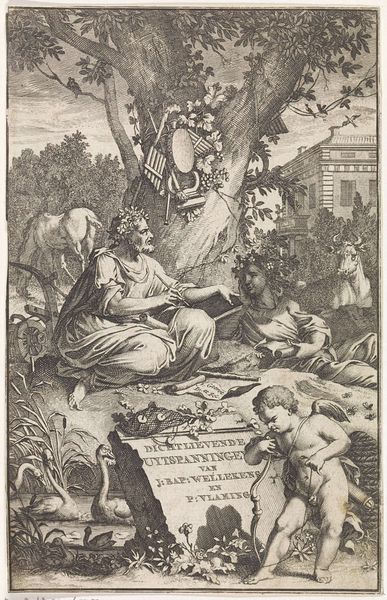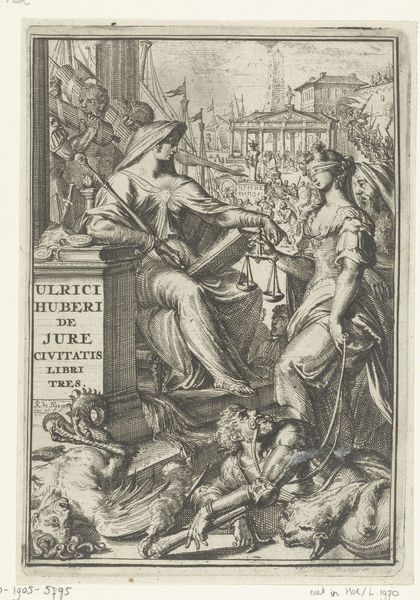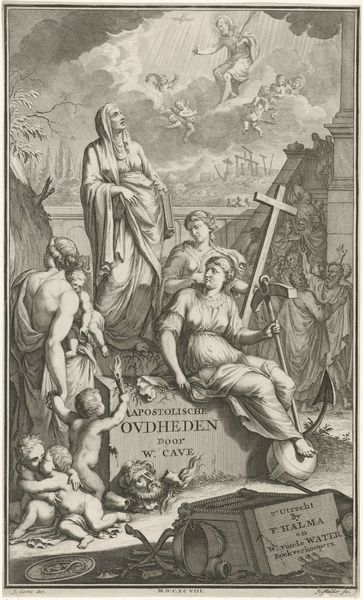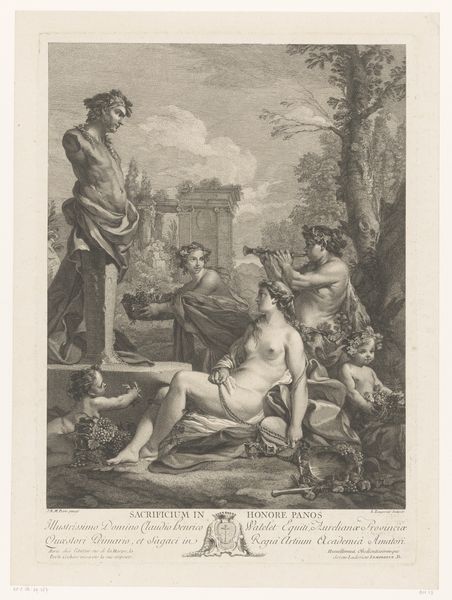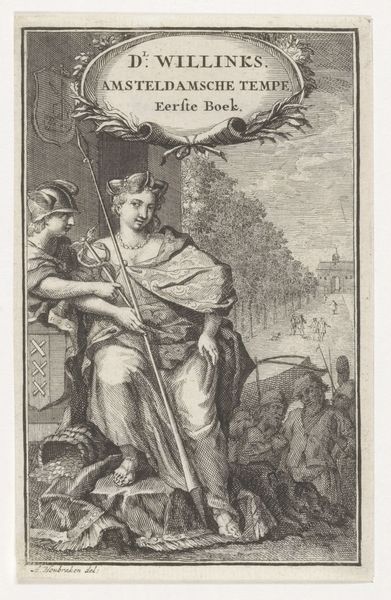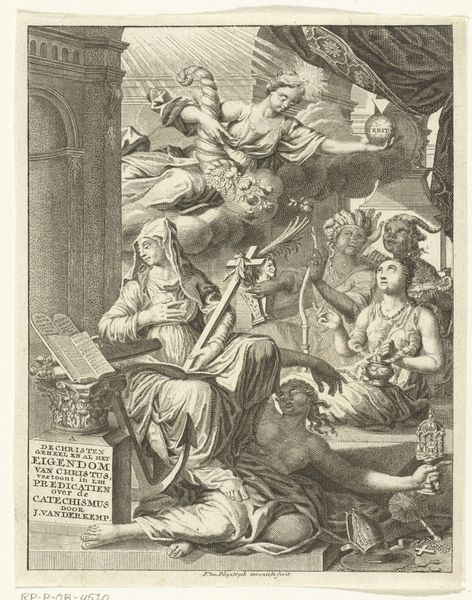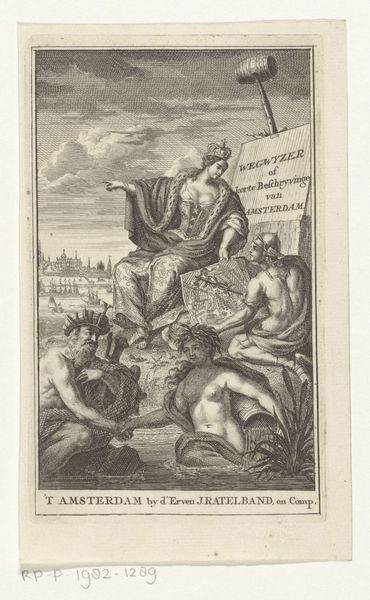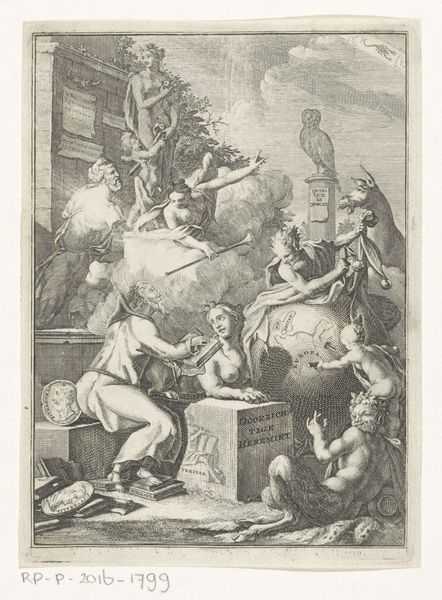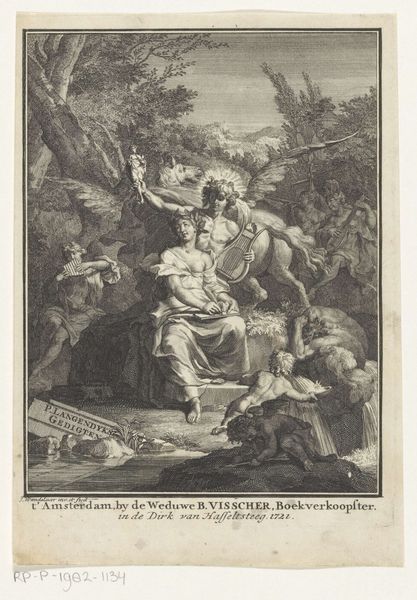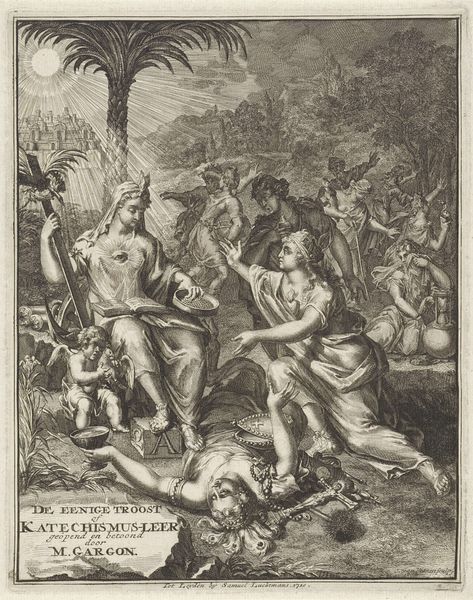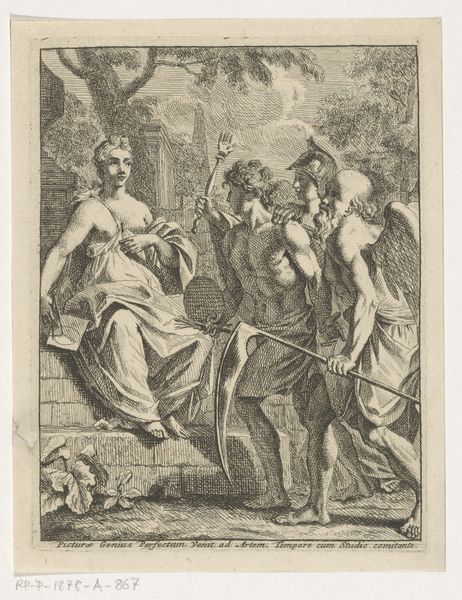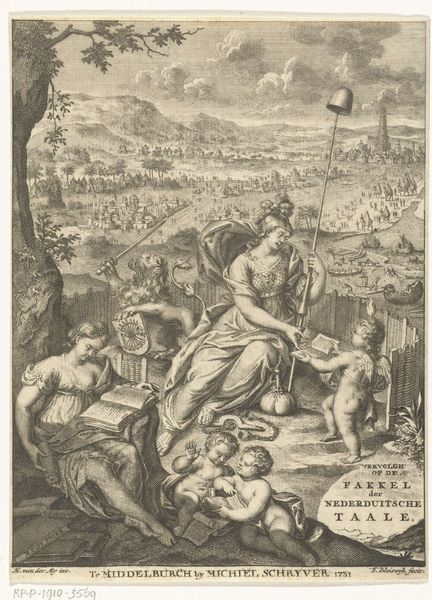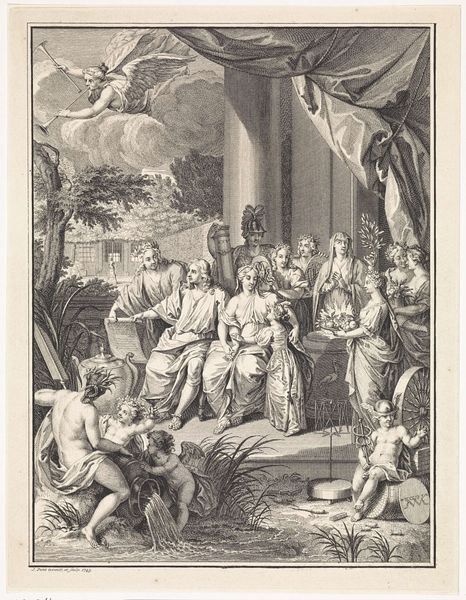
engraving
#
portrait
#
allegory
#
baroque
#
figuration
#
line
#
history-painting
#
engraving
Dimensions: height 165 mm, width 102 mm
Copyright: Rijks Museum: Open Domain
This allegorical print was made by Jan Goeree, around 1718, using the intaglio process of engraving. The design is cut directly into a metal plate, likely copper, with a tool called a burin. This painstaking method requires immense skill. The composition shows Calliope, muse of epic poetry, accompanied by a satyr, putti, and other symbolic figures. But consider the labor involved in making the matrix from which this image was printed, and all the impressions that followed. Each one required close attention to detail, and the press would have been physically demanding. The print’s lines create a sense of depth, light, and shadow, and the texture of the paper adds another dimension. What was it like for the artist to hold the burin, feel the resistance of the copper, and slowly reveal the image? In the end, it’s not just an image. It’s a record of human effort, skill, and the dialogue between artist and material. Appreciating this helps us understand not only the image, but also its place in a much wider world of labor, politics, and consumption.
Comments
No comments
Be the first to comment and join the conversation on the ultimate creative platform.
